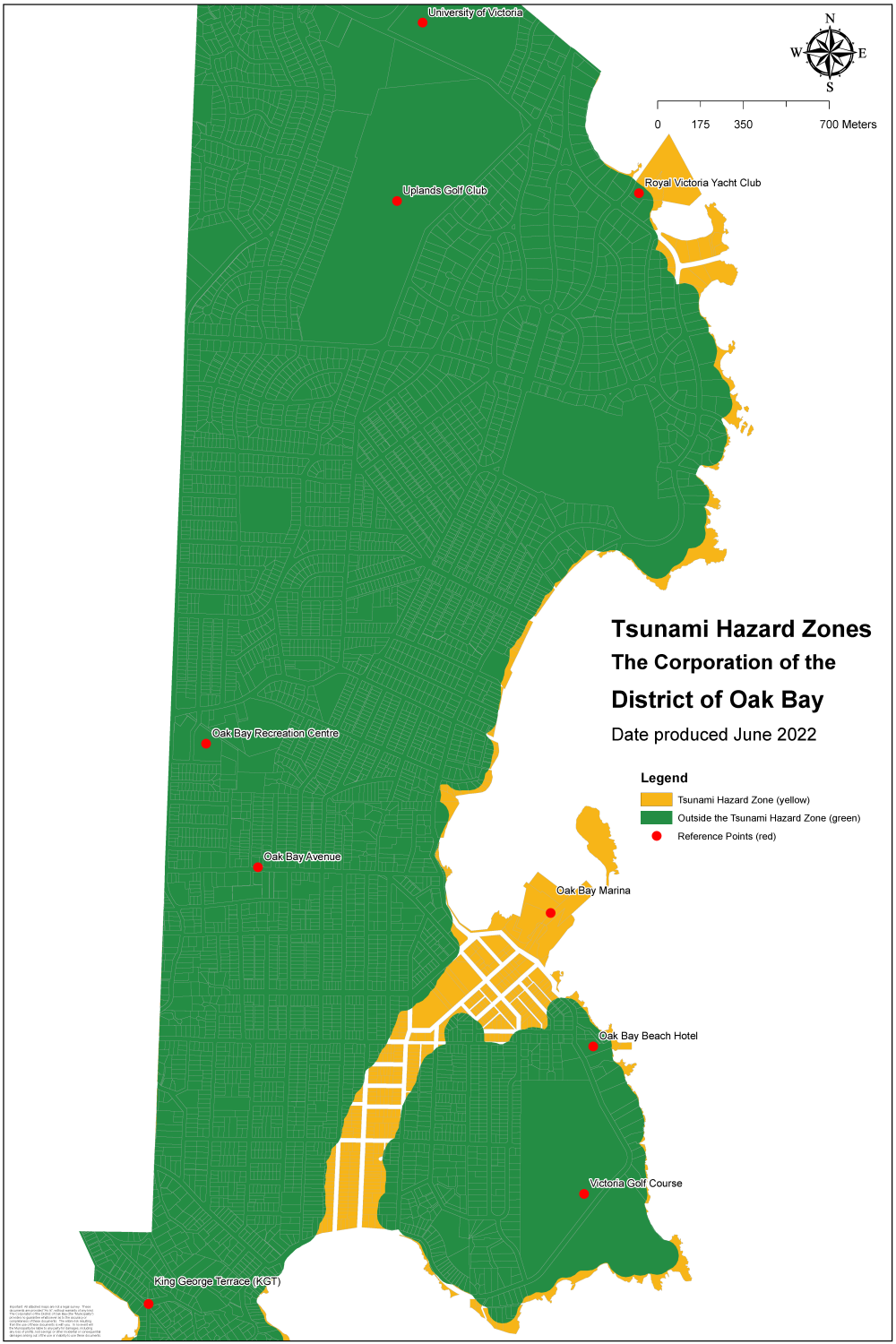Tsunami

Tsunamis in the Capital Region
A tsunami is a rare natural hazard of a series on long surge-like waves and is usually caused by an underwater earthquake, landslide, or volcanic eruption. There are two types of tsunamis: local or felt and distant. The primary tsunami threats in the Capital Region are from a local or felt earthquake in the Cascadia Subduction Zone (CSZ) off the Pacific Coast of Vancouver Island or from the Devil’s Mountain Fault off the south coast of Vancouver Island. A distant tsunami is caused by an earthquake elsewhere in the Pacific Ocean and will not likely be felt. While tsunamis are rare, it is important that you know your risk where you live, work, go to school, or play. Check the map on the inside of this brochure to find out where the hazard zones and the potential zones of safety are in Oak Bay. For other hazard zones in the Capital Region check out specific local government websites or www.PrepareYourself.ca
Be Prepared to respond to a Tsunami
If you live, work, go to school or play in a tsunami hazard zone, have an emergency plan:
- Know where higher ground is in the Capital Region.
- Establish evacuation routes. Plan to evacuate on foot or by bike, if possible.
- Have a family reunification plan that designates meeting places outside the hazard zone. If possible, pre-arrange safe places where you can stay while evacuated.
- Have a Grab & Go bag available for each member of your household, including pets, to take with you in case you must leave where you are.
- Subscribe to Oak Bay’s notification system at www.oakbay.ca/alerts.
- Practice your plan regularly.
Practice Safety
If you are near the ocean or know that you are in a tsunami hazard zone and feel a major earthquake that makes it difficult to stand:
- Drop, Cover and Hold On! After the shaking has stopped, count to 60.
- Move immediately inland or go to higher ground. DO NOT wait for an official warning.
- Tune into local trusted media.
- Follow the instructions of local government authorities.
- DO NOT go near the water for any reason.
- DO NOT go back to tsunami hazard zones until instructed by local government authorities.
Use your phones only for necessary calls. DO NOT call 911 unless you have a life-threatening emergency. If you are NOT located in a tsunami hazard zone:
- Stay where you are, and
- Be prepared to offer shelter to evacuating family and friends.
Tsunami Notifications
A Tsunami Warning indicates that an inundating wave is possible and evacuation may be suggested.
A Tsunami Advisory indicates that strong currents are likely and you should stay away from the shore
A Tsunami Watch is issued if the danger level is not known and you should stay alert.
A Tsunami Information Statement indicates minor waves at most and no action is suggested.
A Tsunami Cancelation or All Clear – Local government officials will tell you when the danger has passed.
Boost Your Tsunami IQ By
Start by reviewing PreparedBC Tsunami information, which provides an overview of tsunami risk, preparedness and response in British Columbia.
You can also follow @PreparedBC on Twitter for more tips and info, as well as news on what other jurisdictions are doing.
Also check out the helpful links below.
 Instagram
Instagram
 Facebook
Facebook
 Twitter
Follow @DistrictOakBay
Twitter
Follow @DistrictOakBay
